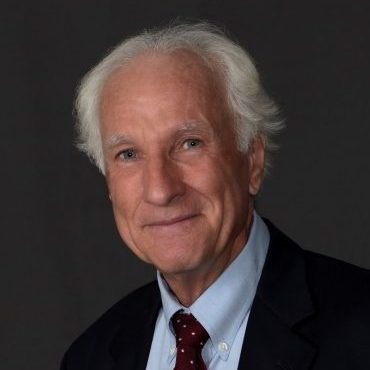 In a forum normally dominated by critics peddling misleading attacks with bumper sticker solutions, two recent articles on the stark realities of the fight against disease should be front and center in any meaningful discussion. One describes a miraculous, but costly treatment for a few thousand patients. The other explains why companies are shying away from government partnerships to develop vaccines for potentially devastating epidemics because of the inherent risks, coupled with allegations that they’re ripping off the public. Those behind such attacks blame patents and licensing for the “unfairness” of the drug development system. Their solution is “delinking” R&D from markets, so governments, not industry, call the shots. That idea was floated in an UN report which the Obama State Department publicly condemned for its obvious bias (see State Department, Universities Blast UN Attack on Patents). Now it appears the World Health Organization is resurrecting the proposal. If having the UN bureaucracy controlling drug development sounds like a good idea to you, it’s too late for anything I can say to matter. But for everyone else let’s consider a few sobering realities before others dive off the deep end.
In a forum normally dominated by critics peddling misleading attacks with bumper sticker solutions, two recent articles on the stark realities of the fight against disease should be front and center in any meaningful discussion. One describes a miraculous, but costly treatment for a few thousand patients. The other explains why companies are shying away from government partnerships to develop vaccines for potentially devastating epidemics because of the inherent risks, coupled with allegations that they’re ripping off the public. Those behind such attacks blame patents and licensing for the “unfairness” of the drug development system. Their solution is “delinking” R&D from markets, so governments, not industry, call the shots. That idea was floated in an UN report which the Obama State Department publicly condemned for its obvious bias (see State Department, Universities Blast UN Attack on Patents). Now it appears the World Health Organization is resurrecting the proposal. If having the UN bureaucracy controlling drug development sounds like a good idea to you, it’s too late for anything I can say to matter. But for everyone else let’s consider a few sobering realities before others dive off the deep end.
“How much is your eyesight worth to you?”, an editorial in the Chicago Tribune discusses a breakthrough treatment for one to two thousand Americans with a rare disease leading to blindness. The catch? The drug is priced at $850,000 per patient.
But if you’re expecting a tirade against high drug prices, you’re in for a surprise:
But imagine you are one of those patients today. Imagine what Luxturna could mean to your life.
We’re not here to celebrate nosebleed prices. But we do celebrate the genius that drives the development of such powerhouse drugs. And the free markets that allow companies to set prices so they reap profits from blockbuster drugs. Today’s profits, of course, become the seed money for tomorrow’s research on … more new, perhaps miraculous, drugs.
The trouble with such medical miracles: They’re not cheap. They never will be.
The editorial cites the Tufts Center for the Study of Drug Development which estimated the average cost for new drug development at $2.6 billion. Most drug candidates never make it to the market but still have substantial costs that must be paid by the few that successfully run the gauntlet. The Tribune then gets to the crux of the issue:
In recent years, U.S. spending on prescription drugs has rocketed. One reason: Drug companies continue to launch novel medicines that bring breakthrough therapies to treat an array of illnesses, from multiple sclerosis to several forms of cancer. Luxturna shares a dubious distinction with some of those drugs: Its price tag approaches $1 million.
But remember, prescription drugmakers face not only the failure of new products, but also fierce competition. They have a limited time to sell new products before lower-cost generic versions are allowed…
But who wants to tell the drug companies to stop because the cost of a cure is too high?
The paper concludes:
What’s fair? What’s gouging? We don’t know. Nor do politicians… But as long as the market largely decides prices, researchers will continue to find these medical miracles. The next one may vastly improve life for several thousand people. Or several million.
Of course, the other side wasn’t about to let that go unanswered so a letter to the editor titled For Big Pharma, profits come first, not patients alleges that because of the Bayh-Dole Act “… the big companies can either license the drugs or buy out small biotech companies carrying out NIH-funded research. In short, much of the research going into these products is funded by taxpayers, not pharmaceutical revenues.”
While highly misleading, this line of attack isn’t limited to those who accept the long odds and high risks in treating diseases with small markets. It’s helping to drive companies away from frantic calls to develop vaccines for anticipated epidemics as pointed out in Who will answer the call in the next outbreak? Drug makers feel burned by string of vaccine pleas:
Every few years an alarming disease launches a furious, out-of-the-blue attack on people, triggering a high-level emergency response. SARS. The H1N1 flu pandemic. West Nile and Zika. The nightmarish West African Ebola epidemic.
In nearly each case, major vaccine producers have risen to the challenge, setting aside their day-to-day profit-making activities to try to meet a pressing societal need. With each successive crisis, they have done so despite mounting concerns that the threat will dissipate and with it the demand for the vaccine they are racing to develop.
Now, manufacturers are expressing concern about their ability to afford these costly disruptions to their profit-seeking operations. As a result, when the bat-signal next flares against the night sky, there may not be anyone to respond.
The article points out that compounding the problem are public relations nightmares like that experienced by Sanofi Pasteur after it agreed to partner with the Department of the Army and NIH to develop a vaccine for the Zika virus which appeared poised to spread in the U.S. As discussed, (see Proposal from Senator King Won’t Reduce Drug Prices, Just Innovation) Sanofi was the only company expressing any interest in licensing a promising vaccine invented by Army researchers. When the details of the pending exclusive license became public, many politicians and media outlets castigated Sanofi Pasteur for seeking to make a killing off of a government “developed” vaccine. That the vaccine wasn’t developed and required considerable risk and expense by the company before it could be used was brushed aside with claims it had a guaranteed a billion dollar market. Senator Bernie Sanders (I-VT) insisted that the deal be reworked into a non exclusive license with strict price controls. When Sanofi said it couldn’t accept such terms the outrage intensified.
Ultimately the deal collapsed when it turned out the government was shifting its resources to other disease targets as the Zika epidemic failed to materialize. “It was a bruising experience,” admitted John Shiver, Sanofi’s head of vaccine research and development. “Honestly, we really were trying to be good citizens.” Sanofi’s treatment wasn’t lost on other companies with their own horror stories:
Nearly all the major pharmaceutical companies that work on these vaccines have found themselves holding the bag after at least one of these outbreaks.
GSK stepped up during the Ebola crisis, but has since essentially shelved the experimental vaccine it once raced to try to test and license. Two other vaccines — Merck’s and one being developed by Janssen, the vaccines division of Johnson & Johnson — are still slowly wending their ways through difficult and costly development processes. Neither company harbors any hope of earning back in sales the money it spent on development.
A number of flu vaccine manufacturers were left on the hook with ordered but unpaid for vaccine during the mild 2009 H1N1 flu pandemic. By the time the vaccine was ready — after the peak of the outbreak — public fear of the new flu had subsided. Many people didn’t want the vaccine, and some countries refused to take their full orders. GSK, Sanofi Pasteur, and Novartis — which has since shed its vaccines operation — produced flu vaccine in that pandemic.
Not only being left holding the bag financially but being savaged by grandstanding politicians is an experience companies are only too happy to avoid. But if we’ve made such high risk public/private sector partnerships untenable, there’s a price to be paid when the next threat isn’t a false alarm as the article concludes:
Finding a way that allows vaccine makers to help without sustaining these kinds of operational costs is critical to the success of future disease outbreak responses, experts say. Because the reality is that even if a government or academic laboratory designs and tests a promising vaccine for a dangerous pathogen, someone has to make it — and potentially make large amounts of it.
“These repeated incidences where people were left hanging is going to make it a lot harder for companies to be able to make the case internally that they should get involved. And if that happens — which I think it is happening — the world is going to be in a much riskier place,” said Dr. Mark Feinberg, president of the International AIDS Vaccine Initiative and formerly Merck’s chief science officer.
Despite the difficulties, the private sector is far and away the best bet for developing the desperately needed medicines of the future. Government is a critical partner and can fund research at our universities and federal laboratories that can’t be done anywhere else. It can also remove some, but not all of the risk inherent in developing treatments for diseases lacking sufficient market size and stability to attract traditional investment. But it still requires a company willing to assume the burden of transforming a discovery into a product that can alleviate suffering. This becomes much more difficult when good faith efforts are misrepresented as exploiting the most vulnerable. Despite the difficulties, our patent driven, free enterprise system is vastly superior to anything the UN is likely to devise. It sure would be nice between the constant attacks if our system, which has done so much to protect patient’s lives– and eyesight– received more appreciation. It’s not perfect, but it sure beats the alternative.

![[IPWatchdog Logo]](https://ipwatchdog.com/wp-content/themes/IPWatchdog%20-%202023/assets/images/temp/logo-small@2x.png)

![[Advertisement]](https://ipwatchdog.com/wp-content/uploads/2024/04/Artificial-Intelligence-2024-REPLAY-sidebar-700x500-corrected.jpg)
![[Advertisement]](https://ipwatchdog.com/wp-content/uploads/2024/04/UnitedLex-May-2-2024-sidebar-700x500-1.jpg)
![[Advertisement]](https://ipwatchdog.com/wp-content/uploads/2024/04/Patent-Litigation-Masters-2024-sidebar-700x500-1.jpg)

![[Advertisement]](https://ipwatchdog.com/wp-content/uploads/2021/12/WEBINAR-336-x-280-px.png)
![[Advertisement]](https://ipwatchdog.com/wp-content/uploads/2021/12/2021-Patent-Practice-on-Demand-recorded-Feb-2021-336-x-280.jpg)
![[Advertisement]](https://ipwatchdog.com/wp-content/uploads/2021/12/Ad-4-The-Invent-Patent-System™.png)






Join the Discussion
2 comments so far.
Anon
January 25, 2018 06:39 pmMaybe we need to invent a new (FAR less costly) development model….
Paul Cole
January 25, 2018 01:46 pmFor the avoidance of doubt, I agree with every word.
One possible solution would be to increase the life of the patent to 50 or 75 years for pharma and biotech inventions, enabling the discoverer to spread the development cost over a longer time period. Frankly, if you take medicine for a chronic condition such as blood pressure, you would much prefer a single reliable supplier with a long term interest in and responsibility for the drug to a host of generic suppliers, here today and gone tomorrow.
Another issue is the cost of development – could drug testing be made less expensive without loss of safety? We need a host of new antibiotics, and the industry needs encouragement to discover them. And, I fear, privately funded research is by far the best way.